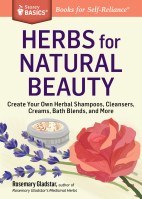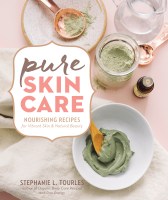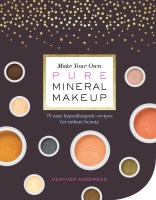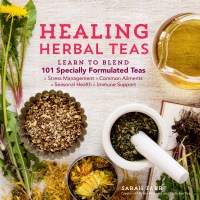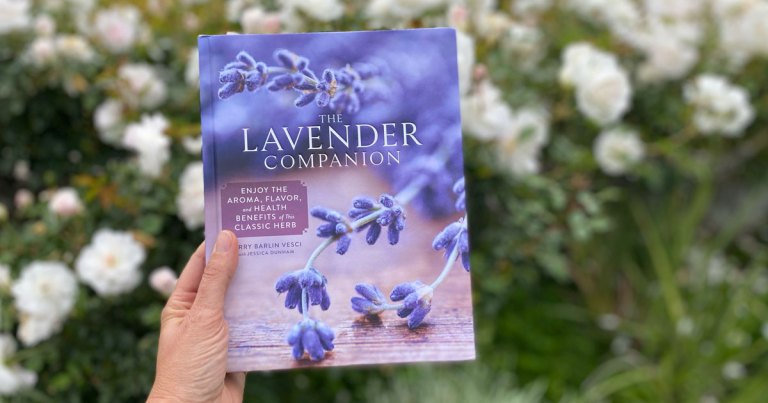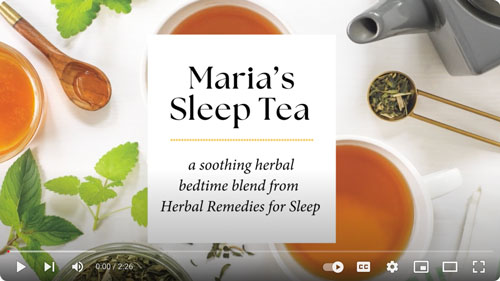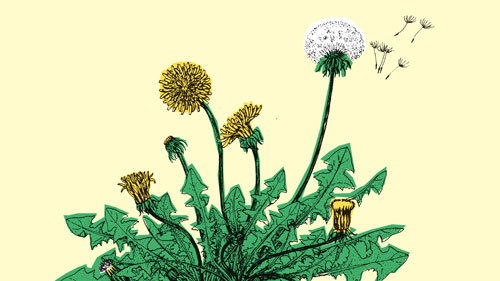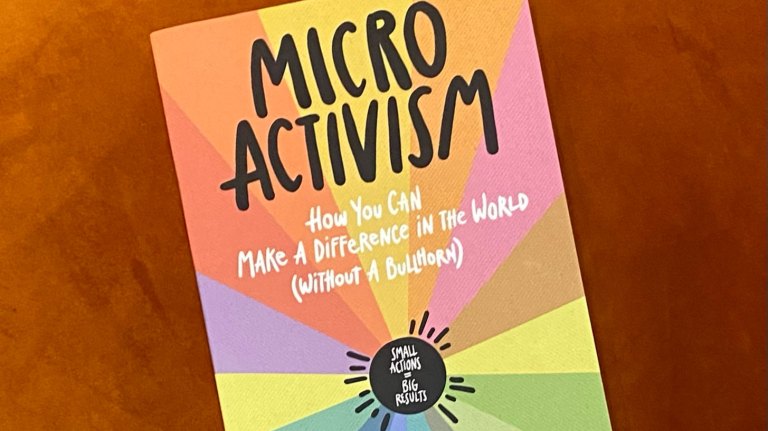Embrace Your Wisdom Highlights with Natural Hair Coloring
Care for your hair—and the planet—by swapping chemical dyes for herbal hair colorants and learn to love your white and graying locks.
Greetings Every Beauty! Did you know that herbs can color, condition, and repair your hair? Herbs can even assist in transitioning out of hair coloring when we decide to embrace our wisdom highlights.
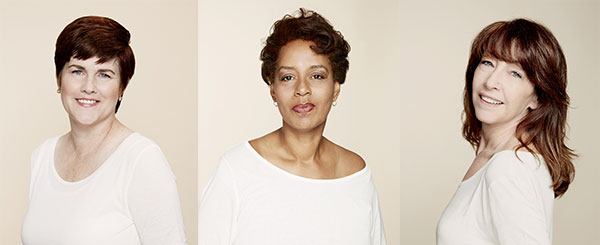
Why does our hair change color? Melanins are the proteins that give hair its color. Dark hair proteins, eumelanins, combine with light hair proteins, pheomelanins, to create your unique hair color. Each strand of your hair has its own individual levels of these proteins, giving your hair color dimension. Melanin levels vary as we age, and therefore hair color changes as a result. White hair has no melanin at all.
Hair color also changes due to a change in enzyme production over time. Hair follicles naturally produce hydrogen peroxide, which is broken down by enzymes. As the production of these enzymes declines, hydrogen peroxide levels increase, inhibiting melanin production. Add sun exposure, and hair color changes occur. Some lighter hairs shift into a dark charcoal, while redheads tend to shift brown before going gray. What colors are you experiencing that you have not before?
Did you know that white and gray hair has a hard time holding onto both its original hair color and chemical hair colorants as well? Chemical hair colorants break down the cuticle, the outer layer of hair, changing the hair color in the cortex, the inside core. White and gray hair has not retained its natural base color, making it more resistant to chemical colors.
If you have ever chemically colored your hair hoping for gray coverage, you most likely learned that your hair coloring appointments became more frequent since the color doesn’t hold. This is why chemical hair coloring companies started to market to younger folks for “mood hair color.” Younger, healthier hair holds color. However, the more frequently dark chemical colors are applied to white and graying hair, the more personal, professional, and environmental exposure to chemicals through contact, breathing, and waste.
Synthetic dyes for hair were developed in the 1860s with the discovery of the reactivity of para-phenylenediamine with hair, which has since been linked to non-Hodgkins lymphoma. As an alternative, herbs that are found in natural and health food stores and online can be used to color hair safely and naturally. Unlike chemical colorants, herbal colors work like a stain, coating the outside of the cuticle and “filling” the core of the hair with color that previously had no color. This process actually makes coloring hair with herbs a superior choice for gray coverage.
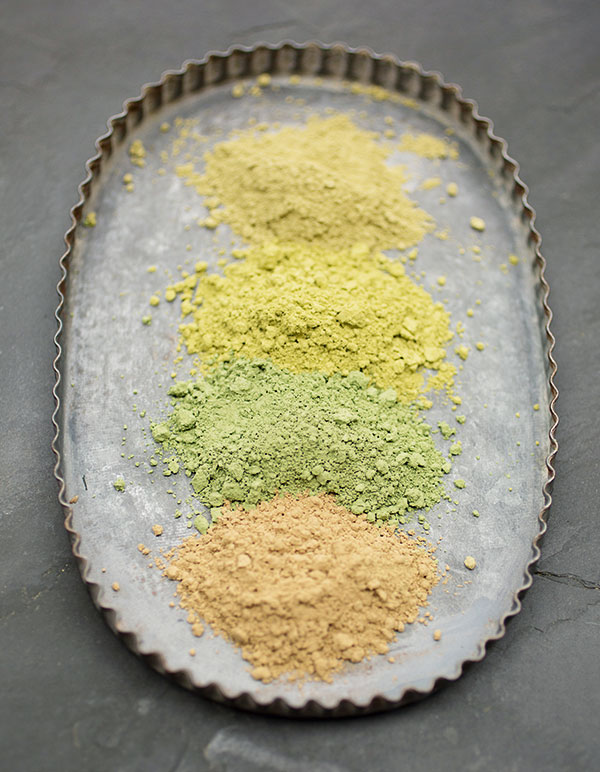
Using herbs for home hair coloring is inexpensive, artistic, and relaxing—and connects us with our ancestors’ wisdom. Mother Nature’s herbs have been used as a multiculturally practiced art since ancient times. Cultures in Africa, Asia, and Europe all have medicinal and cosmetic practices around these herbs grown in hot arid climates, that color hair. The herbs used in hair coloring come in three primary colors (blue, red, and yellow). In elementary school, we learned that mixing these three colors can create all other colors.
Unlike chemical hair colorants which color hair any color, often in a single application, regardless of the current base colors, we put the base colors into our recipe equation for the results we want when using herbs to color hair. We can create a wide range of hair colors from soft blond, to strawberry, carrot, red, mahogany, brown, chocolate, and black by matching certain herbs with the color of your natural hair.
When transitioning from coloring into gray, herbs can condition while adding subtle tones to ease out of what was and into what is becoming. Did you know that using herbs on “salt and pepper” or “sugar and spice” hair, where gray hairs are a smaller percentage of base color, produces natural highlights? A “reverse ombre” is a fun way to try herbal mud colorants since the regrowth area of hair would remain its natural color while mid-length and tips of hair would have various herbal recipes for the desired look. This makes growing hair out super simple.
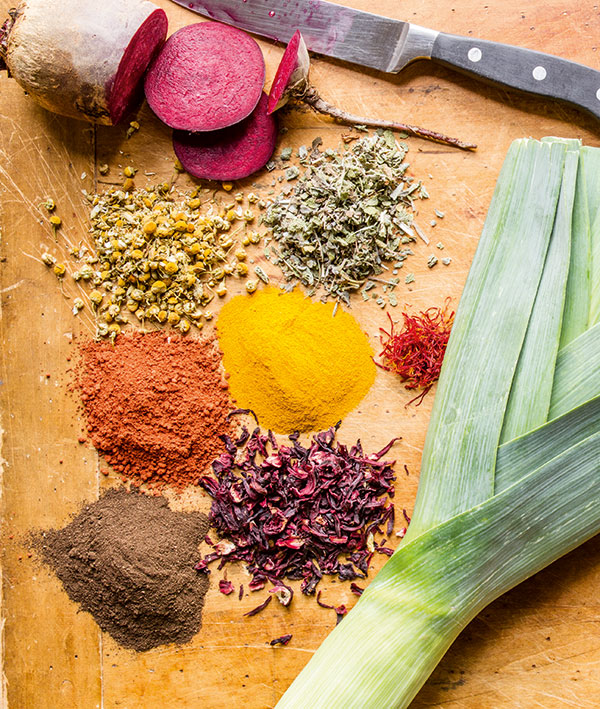
While coloring hair with herbs has limitations, for those who are unable to use chemical colorants or for those wanting to live more aligned with their already existing plant-based life, seek reconnection with ancestral practices, express yourself through physical change, or color or transition into silver or white hair, herbal colorants are worth exploring.
We are each individuals within a collective, what works for one is not always true for others. What is shared here are common tendencies, your experience with hair color may be different. One thing that is clear is that we are responsible for how our actions impact our common environment, such as using products that harm shared resources like water, air, land, and forest.
Did you know that products such as chemical hair colorants eventually go down the drain and into the water system, where they mix and create new unexpected chemical combinations? It is easier to keep water clean than it is to clean polluted water. What we do returns to ourselves. Because herbs are all-natural, they are generally non-toxic if grown herbicide and pesticide-free, making natural hair coloring safer for people and the planet.
While “re-member-ing” our community we must also remember that leading holistic health practitioners urge us to discover our unique selves, for when we truly know who we are and embrace our full potential we not only free ourselves but everyone else.
Breaking the beauty chains is breaking the lie that we have to do something to achieve what is seen as beautiful. What is offered here is not a doing but an honoring of your being through self-care practices that nourish your wellness.
Part of natural beauty is finding the things that work for you and give you joy and health. From this, wellness beauty arises as a place of comfort with ourselves. I continue to unlearn unhealthy beauty practices for me. Silver is becoming the new blond.
Text © Christine Shahin. Photos excerpted from Natural Hair Coloring.

